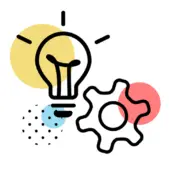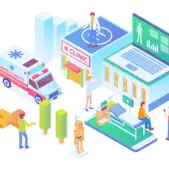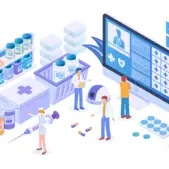Good user experience is the backbone of any digital product or service’s success. It focuses on meeting user needs, improving brand loyalty, and reducing the risk of product failure. To achieve great UX, usability testing is a must. The usability testing process enables designers and product teams to assess ease of use, potential issues, and areas for improvement. Remote usability testing methods make this process fast and cost-effective.
This guide explores what usability testing entails, its benefits, and how to leverage the insights gained for a strategic competitive edge.

What Is Usability Testing?
Usability testing is the practice of evaluating the functionality and user experience of a website, app, or product by observing real users as they attempt to complete tasks on it. The goal is to reveal areas of confusion, uncover pain points in the customer journey, and identify opportunities to improve the overall UX.
By observing the behavior and reactions of users as they interact with the product, you get a clear idea of how users use the product, rather than relying solely on your own assumptions or feedback from internal stakeholders. This provides valuable insights that can help you create more intuitive, efficient, and enjoyable interactions.
Usability testing allows you to identify issues that may not be obvious to internal teams already familiar with the product. Real users often reveal problems or pain points that design and development teams have overlooked. Watching users interact with the product can provide invaluable insights.
Some key benefits of usability testing include:
-
- Validating prototypes and confirming the product meets user expectations
- Identifying issues with complex flows or functionality
- Complementing and illuminating other data points like funnel analysis
- Catching minor errors like broken links or grammatical issues
- Developing empathy for the user’s perspective
- Getting buy-in for necessary changes
- Ultimately providing a better, more user-friendly experience
Combining User Research and Testing Tools
It’s important to note that not all user research and testing tools qualify as usability testing. For example:
-
- A/B testing involves experimenting with different versions of a webpage to determine which is most effective rather than evaluating the product’s functionality and usability.
- Focus groups gather opinions about a product or service but do not test how users actually interact with it.
- Surveys can provide valuable user feedback but do not allow you to observe users’ behavior and reactions.
- Heatmaps show aggregate user interactions but do not evaluate the overall usability.
While these tools do not constitute usability testing independently, they can be used in conjunction with usability testing to generate more comprehensive results and insights. By combining multiple research methods, you can get a well-rounded understanding of your users’ needs and pain points.
In-Person vs Remote Usability Testing: Pros and Cons
In-person usability testing involves having users complete tasks on a product while researchers observe them in a controlled, physical setting. On the other hand, remote usability testing allows users to interact with the product from their own environment while the researcher observes remotely.
Pros of In-Person Usability Testing
- Researchers can observe body language and facial expressions to gain deeper insights.
- The controlled environment allows for more standardized testing conditions.
- Researchers can ask follow-up questions and provide guidance in moderated sessions.
Cons of In-Person Usability Testing
- Requires significant time and resources to set up a testing lab and recruit participants.
- Limits the pool of participants to those who can physically come to the testing location.
- Participants may feel more self-conscious or perform differently in an unfamiliar setting.

Pros of Remote Usability Testing
- Allows for a broader, more diverse pool of participants from different locations.
- Is faster and more cost-effective to set up and run than in-person testing.
- Participants can complete the test in their natural environment, potentially leading to more authentic behavior.
- Enables the collection of quantitative data through features like screen recording and analytics.
- Researchers can also ask follow-up questions and provide guidance in moderated sessions.
Cons of Remote Usability Testing
- Researchers have less control over the testing environment and can’t observe body language or facial expressions.
- Participants may face technical issues or distractions in their own environment.
- Follow-up questions and guidance are more limited in an unmoderated remote test.
Tools and Techniques for Remote Usability Testing
There are two main types of remote usability testing: moderated and unmoderated. In moderated remote usability testing, a researcher moderates the testing session remotely, interacting with the participants and guiding them through the tasks. The moderator can observe the user’s actions, ask follow-up questions, and provide clarification as needed.
With unmoderated testing, participants complete the tasks independently, without a researcher present. The testing platform records the user’s actions, and the researcher reviews the recordings and data afterward to identify insights.
The moderated approach provides deeper qualitative insights, as the researcher can probe and get real-time feedback. However, maintaining objectivity in moderation can be challenging, particularly if the researcher has a vested interest in the product design. This can inadvertently lead to biased questions.
Unmoderated testing, on the other hand, is more scalable and cost-effective, allowing you to gather quantitative data from a larger pool of participants. The downside is that if users encounter issues, misunderstand the task, or don’t take it seriously, there’s no one to guide them through. This means users require more thorough preparation.
Best Practices for Best Results
Here are some best practices to keep in mind when conducting remote usability tests:
1. Define Clear Goals and Objectives
Determine what you want to learn from the testing and structure the tasks and questions accordingly.
2. Create Simple, Well-Defined Tasks
Write tasks that are easy for participants to understand and complete without additional guidance. Avoid overly complex or ambiguous tasks.
3. Recruit Representative Participants
Ensure your test participants reflect your target user base regarding demographics, technical proficiency, and user behaviors.
4. Provide Clear Instructions and Context
Give participants a clear understanding of the purpose of the test and any necessary background information before they begin.
5. Use the Right Remote Testing Tools
Leverage platforms that enable screen sharing, recording, and other features to facilitate the remote testing process.
6. Conduct a Pilot Test
Run a small pilot test to identify and address any issues with the tasks, questions, or testing setup before launching the full study.
7. Analyze the Data and Generate Insights
Review the recordings, metrics, and user feedback to identify usability issues, pain points, and opportunities for improvement.
By following these best practices, you can ensure your remote usability testing efforts are well-structured and efficient and generate actionable insights to inform your product design decisions.

Tools for Remote Usability Testing
The core of usability testing doesn’t require many specialized resources or money, just the right know-how. For remote “moderated” testing, you only need video conferencing software like Zoom or Microsoft Teams and either a design prototype (e.g., in Figma) or a live website to walk through. You can still measure task success and estimate time on task, although it will take some manual effort.
However, there are numerous dedicated remote usability testing tools that can make the process more efficient and provide deeper insights. Some popular options include:
- Lookback: Allows for remote screen sharing, video recording, and real-time observation of user interactions.
- Hotjar: Provides session recordings, heatmaps, and other analytics to help you understand user behavior on your website or app.
- UserTesting: Offers a platform to recruit participants, conduct moderated or unmoderated tests, and analyze the results.
UpTop’s R.I.T.E. Method for Remote Usability Testing
At UpTop, we practice a unique usability testing method called R.I.T.E. (Rapid Iterative Testing and Evaluation). This approach is designed to be leaner and more optimized than traditional usability testing.
The key principles of the R.I.T.E. method include:
- Rapid: Develop low-fidelity prototypes that can be quickly updated based on user feedback. This allows iterative testing cycles to rapidly gather feedback and make immediate design improvements.
- Iterative: This approach focuses on the customer’s needs throughout the design process. It enables quick and continuous adjustments to address issues or capitalize on new opportunities.
- Testing: The R.I.T.E. method is helpful because it provides insights based on user testing rather than just opinions. For example, if a design decision is being debated, the R.I.T.E. method allows you to test it with users and gather empirical data to inform the decision-making process rather than relying solely on subjective opinions.
- Evaluation: Analyzing the test results to generate actionable insights that inform the design process.
The R.I.T.E. method emphasizes speed and efficiency, allowing design teams to validate their ideas and make data-driven decisions quickly.
This lean approach to usability testing helps our clients optimize their product designs and deliver better user experiences. It also reduces the time and resources required compared to traditional testing methods.
UpTop Perspective
We’ve really leaned on remote moderated R.I.T.E. usability testing to deliver value quickly, as we often work with clients operating at a fast pace with limited access to their user or customer base.
Analyzing Results From Remote Usability Testing
Analyzing the data gathered from remote usability testing is critical in translating those insights into actionable design improvements. The key is approaching the analysis methodically, focusing on identifying patterns, prioritizing issues, and generating recommendations that can be directly implemented. Consider the following steps to analyze and strategically implement the insights gained for maximum impact and optimal results.
Organize and Categorize
First, organize and categorize the data you’ve collected. Review session recordings, reports, task completion rates, and user feedback to identify common usability issues or pain points. Group related problems together and tag them by severity—for example, “critical” issues that prevent users from completing key tasks versus “minor” annoyances.
Prioritize
Next, prioritize the issues based on their frequency, impact on the user experience, and overall business importance. Critical problems that frequently occur and significantly hinder task completion should be your top priority. Supplement the quantitative data with qualitative insights from user comments to understand the root causes and context behind the issues.
Collaborate and Make Recommendations
With the prioritized list of usability problems in hand, collaborate with your design and product teams to brainstorm potential solutions. For each issue, generate multiple ideas for improvements, such as a UI change, a new feature, or an adjustment to the information architecture. Evaluate each solution’s feasibility and projected impact before deciding which to implement.
Implement and Validate
Finally, plan for iterative testing and validation. After making design changes based on the remote usability test findings, conduct follow-up tests to confirm that the issues have been resolved and that the new experience is more intuitive and effective. This cyclical process of testing, analyzing, and refining ensures that your product continuously improves to meet user needs.
By approaching remote usability testing as an ongoing, data-driven process, you can translate those valuable user insights into meaningful, user-centric design decisions. The speed and scale of remote testing make it a powerful tool for optimizing the product experience.

The Future of Usability Testing
Usability testing is a critical component of modern product design and development. By observing real users interacting with your digital products, you can uncover pain points, identify areas for improvement, and create more intuitive, user-friendly experiences. The rise of remote usability testing methods has made this process faster, more scalable, and more cost-effective than ever before.
As digital products and services evolve, the need for robust user research and testing will only grow. Companies that prioritize usability and incorporate it throughout their design process will be better positioned to deliver experiences that delight customers and drive business success.
At UpTop, we believe the future of usability testing lies in lean, iterative approaches like the R.I.T.E. method. By rapidly testing prototypes, continuously gathering user feedback, and quickly implementing design improvements, we help our clients optimize their products and stay ahead of the competition.
Whether launching a new digital initiative or looking to enhance an existing product, UpTop’s user experience expertise can guide you through the usability testing process and translate those insights into meaningful, user-centric design decisions. Let’s connect to discuss how our services can help you deliver exceptional digital experiences and drive results.


